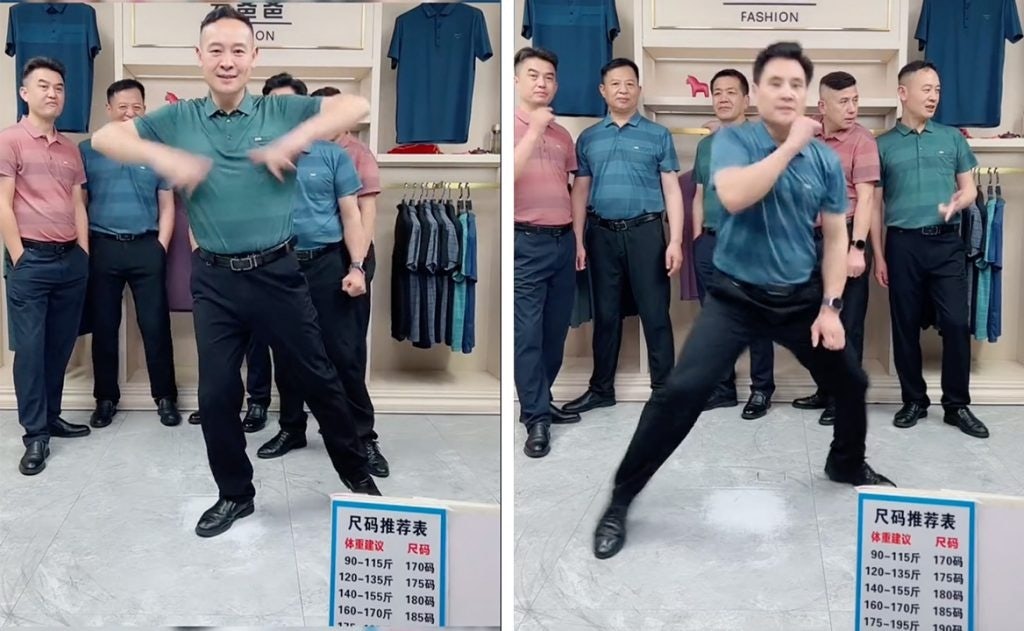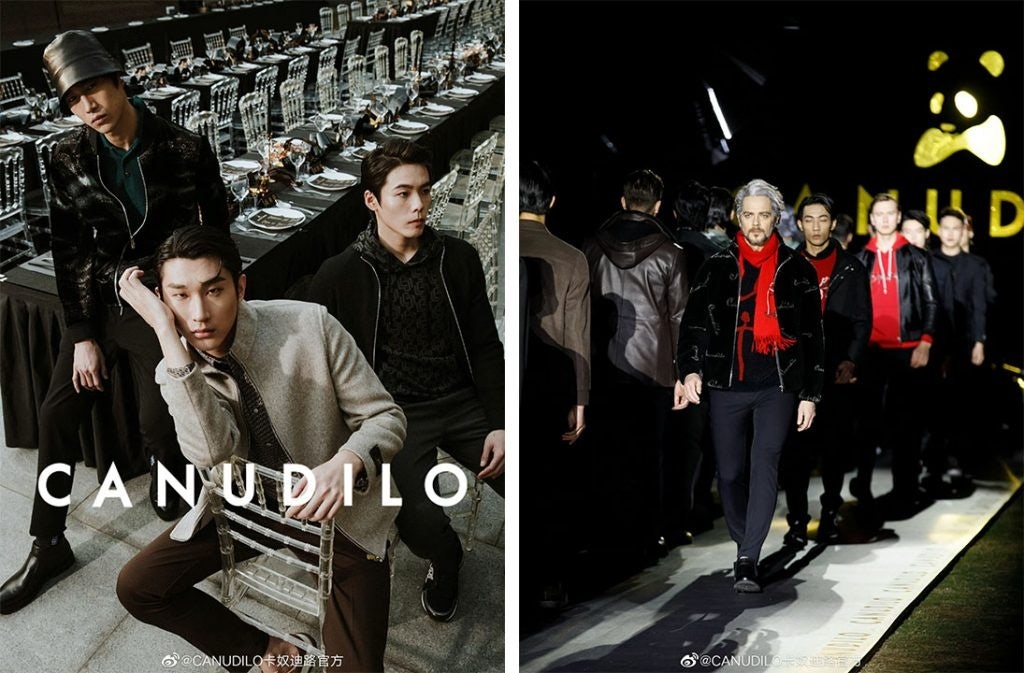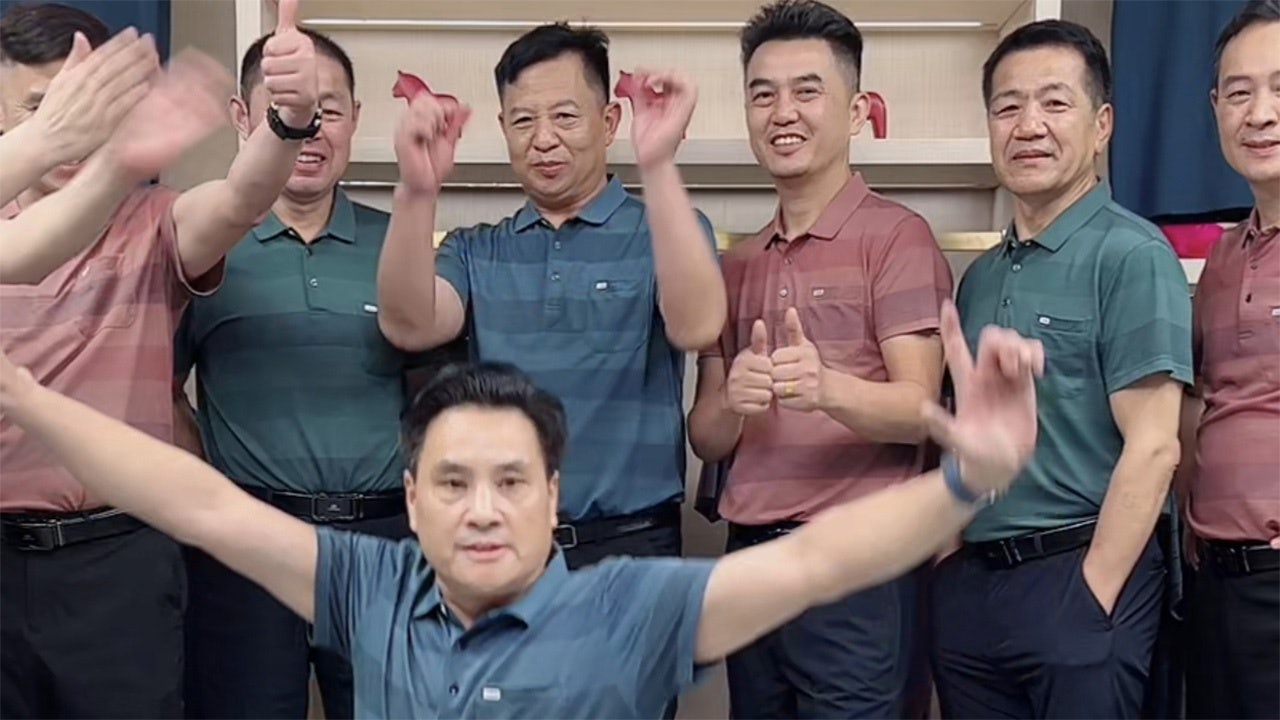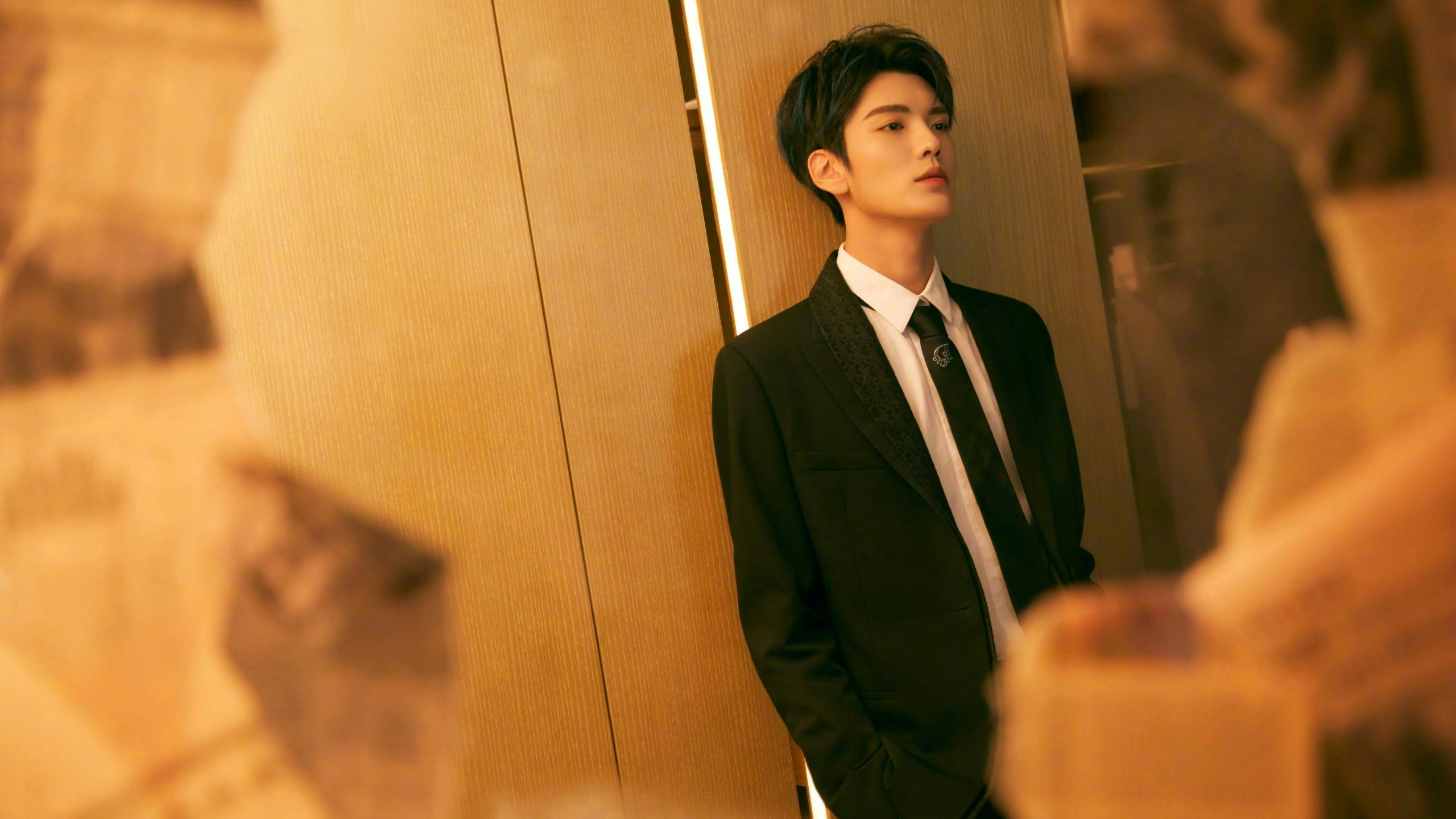Chinese male shoppers are stepping into the spotlight — and it’s not little fresh meat we’re talking about. An account called @云爸爸品牌男装, also known as Yunbaba, that sells middle-aged men's clothing has gained ground recently on Douyin.
In one of its popular livestreams, four men looking to be in their 50s sport designer clothing as they dance to attract customers. The comical performances have garnered tens of thousands of viewers, as well as comments from netizens saying they wished their own fathers would emulate the Yunbaba style.

According to a report by data analysis firm iiMedia Research, China’s menswear industry was worth 104 billion in 2021 and is expected to grow at a CAGR of 8.47 percent in the next five years. In a country of over 1.4 billion people, it’s no surprise male customers are eager to have a sartorial say — hence the phrase ta jingji, or "He economy."
Menswear as a segment (including ready-to-wear, accessories, shoes, and bespoke fashion) is gaining popularity throughout China, from first-tier cities to small rural towns. As a result of the country’s rapid growth across industries, male consumers are willing to spend more money on luxury goods. While Gen-Z male customers have energized China’s fashion market, middle-aged men are armed with higher discretionary income and are better equipped to spend
.#
According to market research firm Euromonitor, foreign luxury and fast fashion brands dominate the menswear market in higher tier Chinese cities. Classic luxury menswear names like Ralph Lauren, Prada, and Louis Vuitton have also benefited from bidding on the development of top cities in China. For example, LVMH chose the eastern coastal city of Qingdao after Shenzhen to launch the Louis Vuittonamp; Exhibition; meanwhile, Ralph Lauren banked on its classic American style hitting the mark in the southwestern consumption hub of Chengdu.
Chinese domestic menswear brands are taking notes. With their competitive advantages — such as localization, pricing, and customer experience — they’re able to pinpoint what Chinese middle-aged men really want. In fact, per data from Statista, China’s menswear market revenue reached 92.3 billion in 2020, surpassing the US for the first time.
Local menswear brand Canudilo, known for classically tailored suits and separates, invites male customers to its themed fashion roundtables. It also collaborates with top local designers and artists such as Liu Pingyun (who designed the 2022 Beijing Winter Olympic mascot), to create eye-catching pieces targeting the middle-aged segment.

However, in a market dominated by younger shoppers, there are few options for middle-aged men. Mr. Wang Xiang, who has been working in the marketing field for years in Beijing, says he has many friends in the fashion industry, but “even for them, the ultimate choices are polo shirts, jeans, and trench coats.” Even as the menswear market accelerates, options for older male shoppers are limited.
Zhongyi Thinktank’s report shows that among stores and malls in 321 cities nationwide, menswear retailing only accounts for 10.18 percent on average, among which Beijing, Shanghai, Guangzhou and Shenzhen have the lowest proportion at 7 percent. “Malls are not motivated to introduce middle-aged menswear brands into the ecosystem. It’s not easy to feed off middle-aged men, especially during the pandemic,” Renee Ouyang, general manager of the Huirun Shopping Mall in Guangzhou, told Jing Daily.
That said, the potential is hard to ignore. According to iResearch.com, annual expenditure on personal image by men is higher than women on Chinese e-payment platforms in 2019. Especially in the upper-income bracket, men spend 1.7 times higher on image building and personal hobbies than women.
Influenced by social media, Chinese middle-aged men are now becoming slightly more open-minded when it comes to style. Dress codes are becoming more casual, expressive, and gender fluid, with the likes of Rick Owens, J.W.Anderson, and Jil Sander selling unconventional silhouettes and styles. Other brands are jumping on the bandwagon too and launching unisex collections to offer more choices to both men and women at different ages.
If luxury brands want to win this demographic, stereotypes must be overlooked. Mark Xu, another Beijing-based senior PR expert, offered some encouragement for brands wishing to exploit the Chinese middle-age men opportunity: “Men are too shy to discuss how to dress themselves if their bodies are out of shape. Money is not the problem but the market still has a lot to do to educate this group.”

